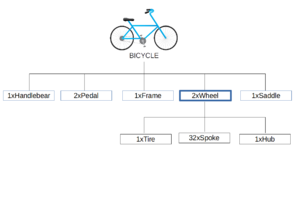Types of inventory
Inventory is outlined as a stock or store of physical goods which are collected near a headquarters. When the organisation is a factory, it is necessary to maintain some inventory of work-in-process and raw materials to keep the manufacture running. Additionally, it has to maintain certain amount of supply of finished goods. Therefore, the company is able to meet the demand and satisfy the customer’s needs. If the company is a retail establishment, there is no need to keep such a big stock of goods because the customers have the opportunity to meet their needs in the brunch firm.
Inventories depend on the demand for goods and services. If the demand is dynamic or high, the company should maintain a higher level of inventory. Thanks to this, the company can aid in future consumption and sale and save the money on wholesale purchases. The negative side of having large stocks is freezing capital in stead of multiplying by investments.
There are following types of inventory:
- Raw materials
- Work-in-progress
- Finished goods
- MRO goods
Raw materials
Raw materials (unprocessed materials, feedstock) are basic materials which are used to produce goods, components and finished products. These items can be elements or objects that the company has acquired from outside the organization. What is more, if there is no input into the production of finished goods, the company can classify them as a raw material. For example, when our company produce the tables, instead of buying the wood which is a raw material, we can buy a desk. The desk is a finished good for our contractor but for us it is a raw material. The firm also can produce and extract raw materials independently.
The relationship between the raw material, components and finished products shows the product structure tree. Reflect on an example of a bicycle.
The bicycle consists of a handlebear, pedals, frame, wheels and saddle. To produce one of the component (wheel) the produce line uses tire, spokes and hub which are raw materials. The handlebear, pedals, frame and saddle are in the same time components and raw materials.
Work-in-progress
Work-in-process and work-in-progress (WIP) can be used interchangeably. WIP includes all material - from raw materials that have been waiting for initial processing or are being fabricated up to these materials which have been completely processed and are waiting for the input into the finished good.
Consider the picture, all items except for the bicycle are work-in-progress (during the production).
Finished goods
Finished goods are completed parts that are ready for the customers orders. These goods are compliant with quality standards, accepted by technical inspection, in accordance with the terms of receipt by buyers, intended for sale, products of their own production.
In the picture the finished good is a bicycle.
MRO goods
MRO goods or Maintenance, repair and operating supplies, are items which are used to maintain and support the infrastructure of the production process. MRO products include:
- The consumables (for example laboratory, office and cleaning supplies),
- Plant upkeep supplies (for example lubricants, gaskets and repair tools),
- Industrial equipment (for example pumps, compressors, valves)
- Furniture, computers, printers etc.
| Types of inventory — recommended articles |
| Indirect material — Direct material — Types of supply — Operating supplies — Types of products — Finished product — Logistics system — Finished goods inventory — Production - forms of organization |
References
- Buzacott J. A. & Zhang R. Q. (2004). Inventory management with asset-based financing, Management Science, 50(9), 1274-1292.
- Vereecke A. & Verstraeten P. (1994). An inventory management model for an inventory consisting of lumpy items, slow movers and fast movers, International Journal of Production Economics, 35(1-3), 379-389.
- Ziukov S. (2015). A literature review on models of inventory management under uncertainty, Vol. 5 (1)
- Vrat P. (2014). Basic Concepts in Inventory Management, Springer, India
- Jiao J., Tseng M. M., Ma Q. & Zou Y. (2000). Generic Bill-of-Materials-and-Operations for High-Variety Production Management, Vol. 8, Nr. 4.
Author: Anna Pietruszewska
